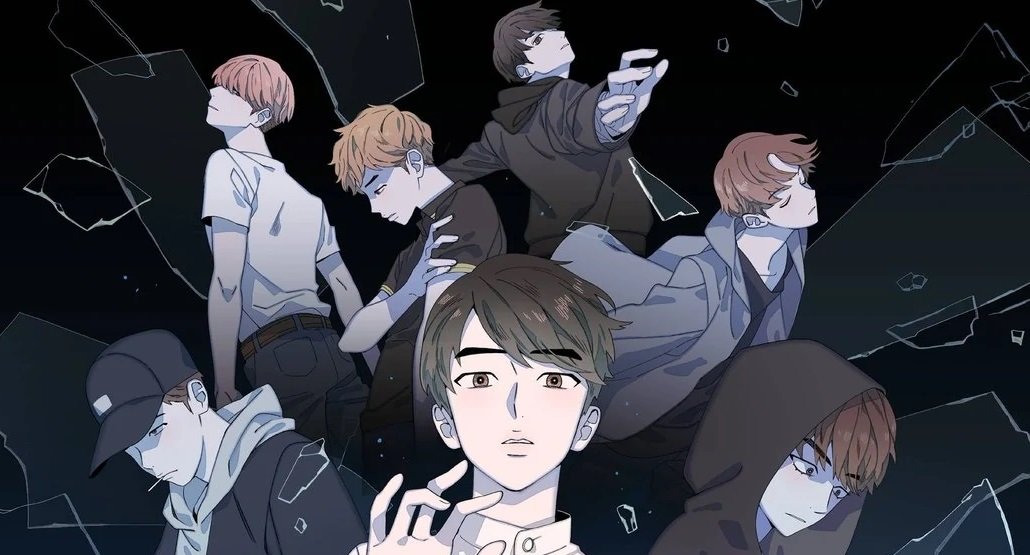Korean-born vertically scrolling digital manga “Webtoon,” which is mainly intended to be read on smartphones, has jumped out of Korea and has been successful in Japan and worldwide. It has won significant awards in the United States, and popular dramas based on webtoons have been broadcast worldwide. What does this rise of webtoons mean? What is the point of success that is not found in Japanese manga? (Writer living in South Korea Miran Tanaka)
Born in South Korea, a digital manga optimized for smartphones.
“Webtoons” born in South Korea are gaining attention and popularity overseas. It is a digital comic that combines “Web,” which means that it is posted on the Internet, and “Cartoon.” Taking advantage of the characteristics of posting on the Web, the works are characterized by vertical scrolling and full-length color and works in various genres from comedy, love story, and fantasy to adult. Even in Japan, online advertisements for apps and functions such as “Piccoma” and “LINE Manga” are frequently posted, so there may be many people who know about their existence or who read the word “webtoon” without knowing it. Isn’t it?
Webtoons appeared in the early 2000s when South Korea was called an “IT powerhouse” as the Internet spread rapidly. Initially, it was thought there would be no growth outside South Korea. Still, with the spread of smartphones and tablet devices, many webtoon works have been translated into local languages overseas, such as Japan and the United States, and are now attracting attention.
A webtoon work won a manga award in the United States.
On July 22, the award ceremony for the “Eisner Awards,” also known as the “Academy Awards of the manga world,” was held in the United States. This award is considered one of the most authoritative manga awards in the United States, and prizes are given in each category to creative and influential works. Katsuhiro Otomo’s “AKIRA,” Naoki Urasawa’s “20th Century Boys,” and Akiko Higashimura’s “Tokyo Tarareba Musume” have also won Eisner Awards. And this year’s winner of the ‘Best Webcomic’ category was a work called ‘Roa Olympus’ serialized in South Korea’s Navertoon.
“Roa Olympus” is Rachel Smythe’s work, a New Zealand manga artist. It is a work with a unique story setting and painting style that reinterprets Greek and Roman mythology in a modern style. The series started in South Korea in March 2018 and was distributed in South Korea, Europe, the United States, and Japan on LINE Manga.
This work won the “Digital Book Category” of the “Harvey Award,” also an American comic award. In addition, it is a work that shows webtoons’ power in the United States.
Speaking of webtoons, there are things like this “Roa Olympus” that reinterpret historical stories, settings, and stories where the main character is reincarnated and lives in another world by possessing a specific person. It is the standard. From the perspective of a manga and anime superpower like Japan, webtoon has a short history. Some people may feel that the layers and genres of works are thin and unsatisfactory.
Dramatized and distributed worldwide on Netflix
A significant success pattern for webtoon works is the dramatization of the work. There are many popular webtoon dramas such as “Goddess Advent,” “Even if I Know,” “D.P. -Desert Tracker-,” “What’s Wrong with Secretary Kim?”, and “Now Our School…”. In addition, many of these are being distributed worldwide on Netflix, which has become a trigger for webtoon works to be widely known.
When news about manga artists taking a break is reported in Japan, how they work becomes a hot topic. Especially when it comes to weekly serialization in manga magazines, it is said that the production time for manga artists is tough even if they have an assistant.
On the other hand, with webtoons, work such as story composition, drawing, and coloring is carried out in a team-based division of labor. Hence, the author is less likely to get exhausted than Japanese manga artists. In addition, thanks to this production style, the story and drawings are easy to visualize, leading to the ease of dramatization. This way, Netflix produced video works based on webtoons and distributed them worldwide. The formula is established that the two will become a global hit by teaming up.
The Japanese publishing industry is changing, but.
It is often talked about that the number of publications on paper media such as magazines and books is decreasing. Although book sales temporarily increased from 2020 to 2021 due to stay-at-home demand due to the corona crisis, there is no doubt that the problematic situation continues with bookstores closing one after another.
When I temporarily returned to Japan, the bookstore I was familiar with in my hometown was out of business. In South Korea, significant bookstores that used to be department stores were closing down or downsizing. The decrease in the number of paper publications and the number of bookstores may be said to be a global trend.
The reasons behind this may be the declining birthrate, aging population, and lack of printed materials. Still, the more significant reason is that the style of reading comics, novels, magazines, and news articles in general on the Internet has become established. Isn’t it from
According to an article in the Asahi Shimbun in December 2021, 2019, the Web surpassed print sales in Japan’s comic sales. In 2020, paper booklet comics will be 270.6 billion yen, and electronic comics (including webtoons) will be 342 billion yen, showing a significant difference from paper booklets. The momentum of electronic comics will continue for the time being, and there is a view that the global market will reach about 3.533 trillion yen around 2028.
Japanese publishers are also beginning to focus on the digitization of comics. KADOKAWA released a vertical scrolling webtoon label, “Tatesuku Comic,” In April of this year, Shogakukan and Shueisha also entered the webtoon market. Also, many publishers that used to publish manga magazines now have apps to distribute their comics so they can be read on smartphones. In this way, Japanese publishers are also moving forward with digitization. Still, overall there is a strong emphasis on the digitization of paper comics, and it cannot be said that this is a fundamental change such as reviewing the production system or business model. I feel like
Many Japanese manga and anime works are loved and hit worldwide, regardless of age or gender. And I think that’s a wall that webtoons can’t overcome yet. That is why, after considering the merits and demerits, I believe that the current Japanese publishing industry needs to take the attitude of actively creating infrastructure and challenging the global market like South Korea’s webtoon.
Korea-born vertically scrolling digital manga “Webtoon,” which is mainly intended to be read on smartphones, has jumped out of Korea and has been successful in Japan and worldwide. It has won significant awards in the United States, and popular dramas based on webtoons have been broadcast worldwide. What does this rise of webtoons mean? What is the point of success that is not found in Japanese manga? (Writer living in South Korea Miran Tanaka)
Born in South Korea, a digital manga optimized for smartphones.
“Webtoons” born in South Korea are gaining attention and popularity overseas. It is a digital comic that combines “Web,” which means that it is posted on the Internet, and “Cartoon.” Taking advantage of the characteristics of posting on the Web, the works are characterized by vertical scrolling and full-length color and works in various genres from comedy, love story, and fantasy to adult. Even in Japan, online advertisements for apps and functions such as “Piccoma” and “LINE Manga” are frequently posted, so there may be many people who know about their existence or who read the word “webtoon” without knowing it. Isn’t it?
Webtoons appeared in the early 2000s when South Korea was called an “IT powerhouse” as the Internet spread rapidly. Initially, it was thought it would not grow outside South Korea. Still, with the spread of smartphones and tablet devices, many webtoon works have been translated into local languages overseas, such as Japan and the United States, and are now attracting attention. Ing.
A webtoon work won a manga award in the United States.
On July 22, the award ceremony for the “Eisner Awards,” also known as the “Academy Awards of the manga world,” was held in the United States. This award is considered one of the most authoritative manga awards in the United States, and prizes are given in each category to creative and influential works. Katsuhiro Otomo’s “AKIRA,” Naoki Urasawa’s “20th Century Boys,” and Akiko Higashimura’s “Tokyo Tarareba Musume” have also won Eisner Awards. And this year’s winner of the ‘Best Webcomic’ category was a work called ‘Roa Olympus’ serialized in South Korea’s Navertoon.
“Roa Olympus” is Rachel Smythe’s work, a New Zealand manga artist. It is a work with a unique story setting and painting style that reinterprets Greek and Roman mythology in a modern style. The series started in South Korea in March 2018 and was distributed in South Korea, Europe, the United States, and Japan on LINE Manga.
This work won the “Digital Book Category” of the “Harvey Award,” also an American comic award. In addition, it is a work that shows webtoons’ power in the United States.
Speaking of webtoons, some things reinterpret historical stories like “Roa Olympus,” settings and levels such as the main character being reincarnated, being possessed by a particular person, and living in another world. It is the standard. From the perspective of a manga and anime superpower like Japan, webtoon has a short history. Some people may feel that the layers and genres of works are thin and unsatisfactory.
Dramatized and distributed worldwide on Netflix
A significant success pattern for webtoon works is the dramatization of the work. There are many popular webtoon dramas such as “Goddess Advent,” “Even if I Know,” “D.P. -Desert Tracker-,” and “What’s Wrong With Secretary Kim?” In addition, many of these are being distributed worldwide on Netflix, which has become a trigger for webtoon works to be widely known.
When news about manga artists taking a break is reported in Japan, how they work becomes a hot topic. Especially when it comes to weekly serialization in manga magazines, it is said that the production time for manga artists is tough, even if they have an assistant.
On the other hand, with webtoons, work such as story composition, drawing, and coloring is carried out in a team-based division of labor. Hence, the author is less likely to get exhausted than Japanese manga artists. In addition, thanks to this production style, the story and drawings are easy to visualize, leading to the ease of dramatization. This way, Netflix produced video works based on webtoons and distributed them worldwide. The formula is established that the two will become a global hit by teaming up.
The Japanese publishing industry is changing, but.
It is often talked about that the number of publications on paper media such as magazines and books is decreasing. Although book sales temporarily increased from 2020 to 2021 due to stay-at-home demand due to the corona crisis, there is no doubt that the problematic situation continues with bookstores closing one after another.
When I temporarily returned to Japan, the bookstore I was familiar with in my hometown was out of business. In South Korea, significant bookstores that used to be department stores were withdrawing or downsizing. The decrease in the number of paper publications and the number of bookstores may be said to be a global trend.
The reasons behind this may be the declining birthrate and aging population, and the lack of printed materials, but the more significant reason is that the style of reading comics, novels, magazines, and news articles on the Internet has become established. Isn’t it from
According to an article in the Asahi Shimbun in December 2021, 2019, the Web surpassed print sales in Japan’s comic sales. In 2020, paper booklet comics will be 270.6 billion yen, and electronic comics (including webtoons) will be 342 billion yen, showing a significant difference from paper booklet comics. The momentum of electronic comics will continue for the time being, and there is a view that the global market will reach about 3.533 trillion yen around 2028.
Japanese publishers are also beginning to focus on the digitization of comics. KADOKAWA released a vertical scrolling webtoon label, “Tatesuku Comic,” In April of this year, Shogakukan and Shueisha also entered the webtoon market. Also, many publishers that used to publish manga magazines now have apps to distribute their comics so they can be read on smartphones. In this way, Japanese publishers are also moving forward with digitization. Still, overall there is a strong emphasis on the digitization of paper comics, and it cannot be said that this is a fundamental change such as reviewing the production system or business model. I feel like
Many Japanese manga and anime works are loved and hit worldwide, regardless of age or gender. And I think that’s a wall that webtoons can’t overcome yet. That is why, after considering the merits and demerits, I believe the current Japanese publishing industry needs to actively create infrastructure and challenge the global market like South Korea’s webtoon.
A blind spot for webtoons is the lack of awareness of plagiarism and copyright issues.
In recent years, South Korea has begun to show its presence in the world with cultures such as webtoons and KPOP, and there are also true that there are blind spots. For example, it is a frequent plagiarism problem.
“Imemanryang,” which began serialization on Naver Webtoon in May, caused a stir on the Internet when it was pointed out that it closely resembled the popular Japanese manga “Chainsaw Man.” As a result, Naver stopped serialization and apologized. In addition, webtoons are often controversial for works believed to be plagiarized, imitating the concept or dialogue of Japanese manga works.
Not limited to manga works, the other day, suspicions arose that the famous musician Yoo Hee Yeol had plagiarized multiple Japanese works, such as Ryuichi Sakamoto, which also led to a riot. The frequent occurrence of such problems suggests that South Korea still lacks awareness of copyright issues.
Nowadays, even in South Korea, copyright is being mentioned in art classes such as music and fine arts in the educational setting. Nonetheless, if we are to expand our market to the world, protecting these morals is fundamental and essential. The webtoon craze will soon die if these problems continue to recur.
Young Koreans who study manga and anime in Japan
Nevertheless, the other day, the Korean girls’ high school team won the highest award at the “Manga Koshien” (National High School Manga Championship) held in Japan. It is common to hear that people of the generation who have been familiar with Japanese manga and anime from an early age are now studying abroad at Japanese universities and vocational schools to study manga and anime.
“How far will the evolution of Korean webtoons continue?” Also, how will Japan, a “manga and anime superpower,” respond to the webtoon boom and make changes in the future? I want to look forward to watching future developments.
The following corrections have been made since the article first appeared.
14th paragraph: Webtoon (comic) is 342 billion yen → Electronic comic (including webtoon) is 342 billion yen
The momentum of webtoons will continue, for the time being, → the momentum of e-comics will continue for the time being,
(August 26, 2022, 17:23 Diamond Editorial Department)











